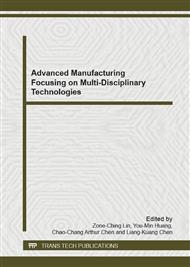p.416
p.427
p.435
p.445
p.453
p.464
p.473
p.483
p.494
Computational Model for a High Speed Train Running on the Railway Structure Including Derailment during an Earthquake
Abstract:
The computational method to solve for the dynamic interaction between a high-speed train and the railway structure including derailment during an earthquake is given. The motion of the train is expressed in multibody dynamics. Efficient mechanical models to express contact-impact behaviors between wheel and the track structure including derailment during an earthquake are given. Rail and track elements with multibody dynamics and FEM combined have been developed. A nonlinear spring element based on a trilinear elastic-plastic material model with the kinematic hardening is given for a concrete railway structure under cyclic loads during an earthquake. The motion of a railway structure is modeled with various finite elements and also with rail and track elements. A modal reduction is applied to solve the problem effectively. An exact time integration scheme has been developed that is free from the round-off error for very small time increments needed to solve the interaction between wheel and railway structure including derailment during an earthquake. Numerical examples are demonstrated.
Info:
Periodical:
Pages:
473-482
Citation:
Online since:
October 2012
Price:
Сopyright:
© 2012 Trans Tech Publications Ltd. All Rights Reserved
Share:
Citation:


